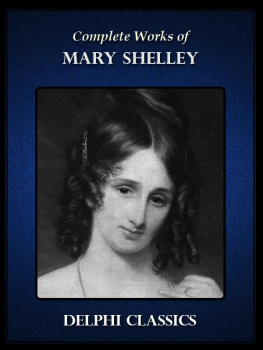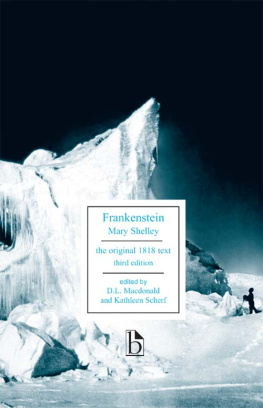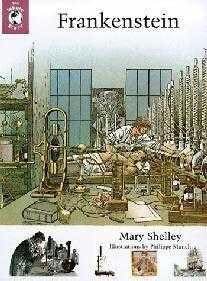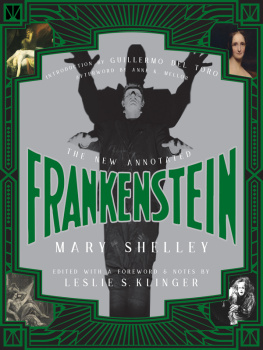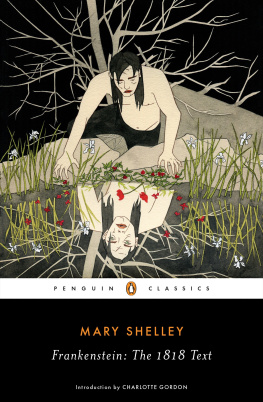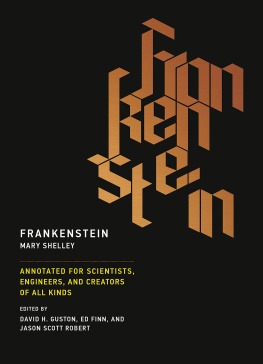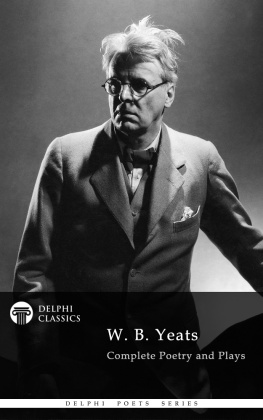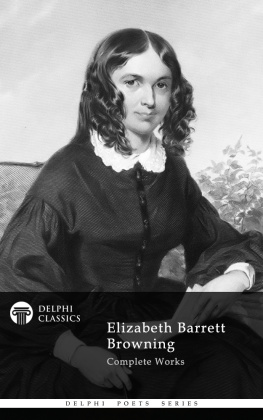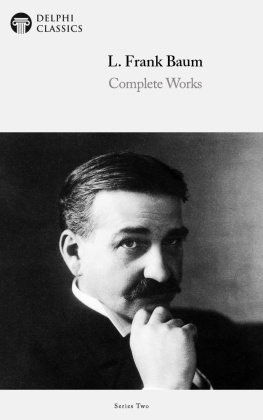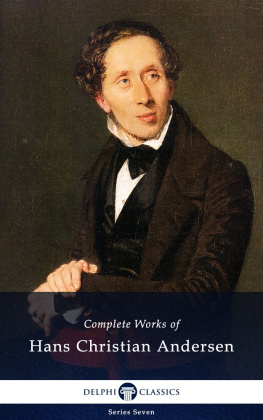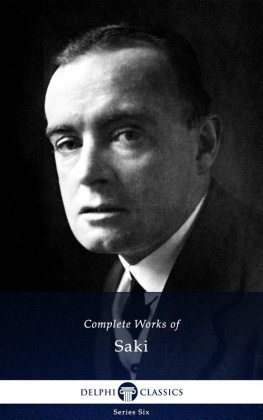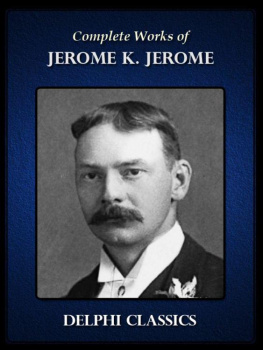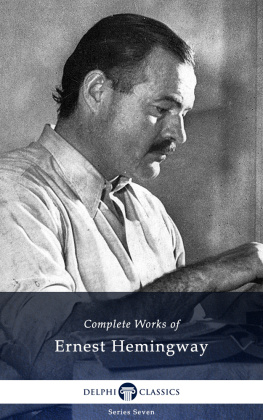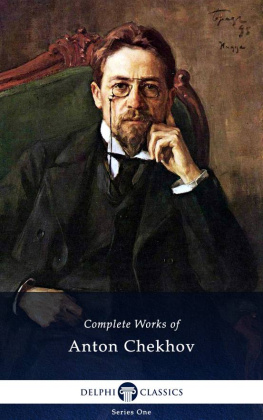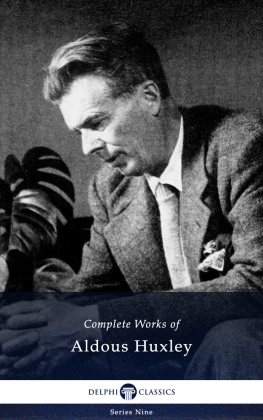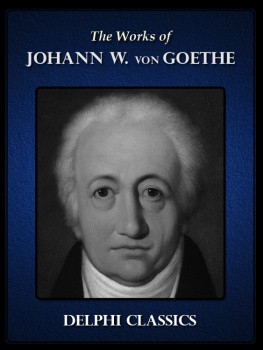Table of Contents
The Complete Works of
MARY SHELLEY
(17971851)

Contents

Delphi Classics 2013
Version 1

The Complete Works of
MARY SHELLEY

By Delphi Classics, 2013
Interested in Mary Shelley?
Then youll love these eBooks

For the first time in publishing history, Delphi Classics is proud to present the complete works of these two writers. Stokers gothic horror stories and Shelleys beautiful poetry will provide perfect supplements to the reading of Mary Shelleys works.
www.delphiclassics.com
The Novels

The Polygon (left) in Somers Town, London Mary Shelleys birthplace

The site of the birthplace today
FRANKENSTEIN (1818 version)

Mary Shelleys Frankenstein was first published in three volumes on New Years Day 1818 by the publishing house Lackington, Hughes, Harding, Mavor, & Jones. The author was anonymous and the novel was dedicated to Shelleys father, the journalist, political philosopher and novelist, William Godwin. There was a second two volume edition published in 1823 and then a third one volume edition published in 1831 which contained significant revisions to the previous versions. Both the original 1818 version and the revised 1831 version are presented in this edition of Shelleys works.
The origins of Frankenstein began in the summer of 1816 when Shelley was staying at the Villa Diodati, near Lake Geneva in Switzerland along with her poet husband Percy Bysshe Shelley, Lord Byron, her step-sister Claire Clairmont, and Dr John Polidari. They had been enjoying telling each other German ghost stories when they entered into a competition to determine who could create the best fantastical tale. The result of this contest produced Polidaris 1819 novella The Vampyre, one of the first stories of the vampire literary genre and Shelleys Frankenstein . The inspiration for the novel did not come immediately to Shelley but was formed after she saw a vision of what would become the creature.
The novel was immediately successful and spawned the play Presumption; or, The Fate of Frankenstein by Richard Brinsley Peake in 1823. Demonstrating the popularity of Shelleys masterpiece, the adaptation is also presented in this collection and can be accessed via . Frankensteins creature has since become iconic and the narrative has been adapted over forty times for film, inspiring more than sixty television series. It remains a classic of the Gothic genre and is by far Shellys most successful work. The fame of the creature has become so vast that it is not uncommon for it to be believed that Frankenstein is the creation rather than the creator. The novel tells the tale of Frankenstein, a young man who becomes obsessed with the possibility of creating life but is then horrified by the result and must live with consequences of his deed. The subtitle of the novel, The Modern Prometheus, clearly establishes the link between Frankenstein and the Greek Titan who disobeyed God and gave fire to mankind. Frankenstein attempts to usurp God by creating a being in his own image and is punished throughout the novel for this arrogance and deviation from nature.
However, while the Promethean myth can be interpreted in solely negative terms as an intention to compete with God, the tale has also viewed Prometheus as a hero that strove to improve humankind and elevate man while resisting the tyranny of God. The positioning of Prometheus as a great figure of lone genius who fought for the rights of mankind was particularly prevalent amongst Romantic writers and Percy Bysshe Shelleys lyric drama Prometheus Unbound (1820) portrays the immortal figure as being able to overcome the tyranny of God with the power of the human heart. Mary Shelleys novel is not a critique on the advancement of scientific experiment or human presumption in questioning God or religion, but it does explore the danger of an obsessive and egotistical pursuit of knowledge and the necessary responsibility that such endeavours entail. One of the creatures bitterest reprimands of Frankenstein is that of desertion; the creator must bear some responsibility for his creation and Frankensteins abandonment and contempt for the creature is cruel and heartless.
Shelley uses the creature as a literary double for Frankenstein; they are bound together and one becomes the obsession of the other. Broadly both characters can be seen as monstrous due to their actions, being consumed by vengeance, self-hatred, loneliness and despair. While Frankenstein begins his descent by pursuing knowledge to the extent he becomes separated from humanity; the creatures misery is compounded when he learns the nature of the human world and his permanent isolation from it. Shelley further exploits the Gothic fiction technique of doubling with the character of Henry Clerval. Frankensteins childhood friend is the better image of himself, the one who is able to restore humanity to Frankenstein; he is the idealised version of the fallen creator, who does not become contaminated by the desire for self-regarding glory. Shelley makes the doubling explicit when Frankenstein states that Clerval was the image of his former self, the uncorrupted man who is able to revel in the sensations of nature.
Doubling is just one aspect of the Gothic genre that Shelley employs in creating a dark and unnerving novel; horror, revenge, isolation, uncontrollable and unacceptable passions and the intermingling of sex and violence all permeate Shelleys text and help to achieve the pulsating, but disturbing narrative. There is uneasiness and even a sense of revulsion that Frankenstein feels towards the idea of sex, and his relationship with the creature develops matrimonial undertones which highlight the Gothic convention of unnatural and perverse relationships, particularly the notion of incest. The enormous impact of Frankenstein continues to this day with the hugely successful 2011 production by Danny Boyle at the National Theatre in England. The acclaimed drama achieved a ten week sold out run and resulted in acting awards for the main two performers, Jonny Lee Miller and Benedict Cumberbatch, proving the popularity and thematic relevance of Shelleys seminal work, retaining its potency for both modern readers and audiences.

John Polidori (17951821) was a fiction writer and physician of Italian descent. He is known for his associations with the Romantic Movement and credited by some as the creator of the vampire genre after writing his 1819 short story, as part of the famous writing competition with Shelley.

